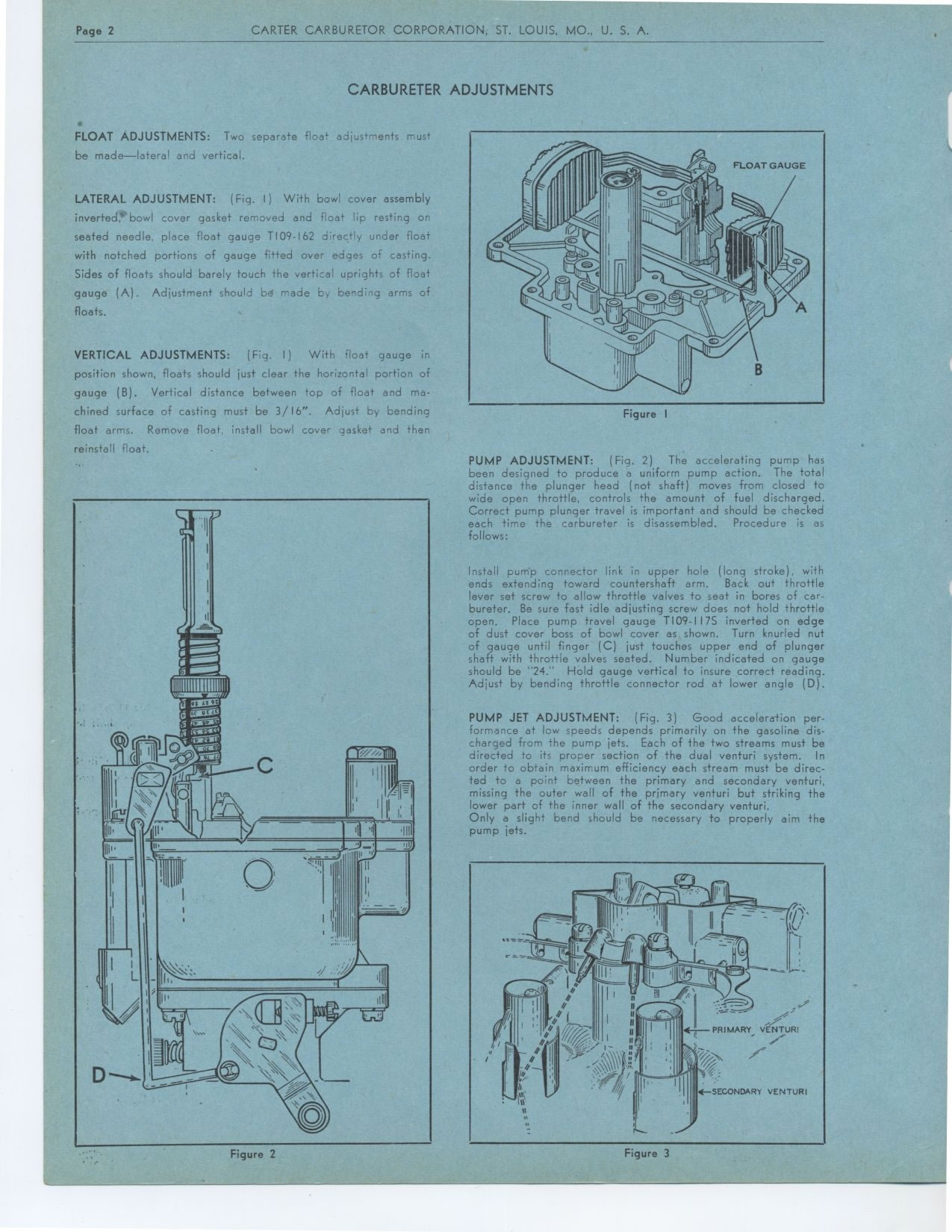|

Page 2 CARTER CARBURETOR CORPORATION, ST. LOUIS, MO., U. S.
A.
CARBURETER ADJUSTMENTS
FLOAT ADJUSTMENTS: Two separate float adjustments must be made—lateral
and vertical.
LATERAL ADJUSTMENT: (Fig. I) With bowl cover assembly inverted'bowl cover
gasket removed and float lip resting on seated needle, place float gauge
T109-162 directly under float with notched portions of gauge fitted over
edges of casting. Sides of floats should barely touch the vertical uprights
of float gauge (A). Adjustment should b8 made by bending arms of floats.
VERTICAL ADJUSTMENTS: (Fig. I) With float gauge in position shown, floats
should just clear the horizontal portion of gauge (B). Vertical distance
between top of float and machined surface of casting must be 3/16".
Adjust by bending float arms. Remove float, install bowl cover gasket and
then reinstall float.
Figure 2
Figure I
PUMP ADJUSTMENT: (Fig. 2) The accelerating pump has been designed to produce
a uniform pump action. The total distance the plunger head (not shaft) moves
from closed to wide open throttle, controls the amount of fuel discharged.
Correct pump plunger travel is important and should be checked each time
the carbureter is disassembled. Procedure is as follows:
Install pump connector link in upper hole (long stroke), with ends extending
toward countershaft arm. Back out throttle lever set screw to allow throttle
valves to seat in bores of carbureter. Be sure fast idle adjusting screw
does not hold throttle open. Place pump travel gauge T109-I17S inverted on
edge of dust cover boss of bowl cover as shown. Turn knurled nut of gauge
until finger (C) just touches upper end of plunger shaft with throttle valves
seated. Number indicated on gauge should be "24." Hold gauge vertical
to insure correct reading. Adjust by bending throttle connector rod at lower
angle (D).
PUMP JET ADJUSTMENT: (Fig. 3) Good acceleration performance at low speeds
depends primarily on the gasoline discharged from the pump jets. Each of
the two streams must be directed to its proper section of the dual venturi
system. In order to obtain maximum efficiency each stream must be directed
to a point between the primary and secondary venturi, missing the outer wall
of the primary venturi but striking the lower part of the inner wall of the
secondary venturi.
Only a slight bend should be necessary to properly aim the pump jets.
Figure 3
|
